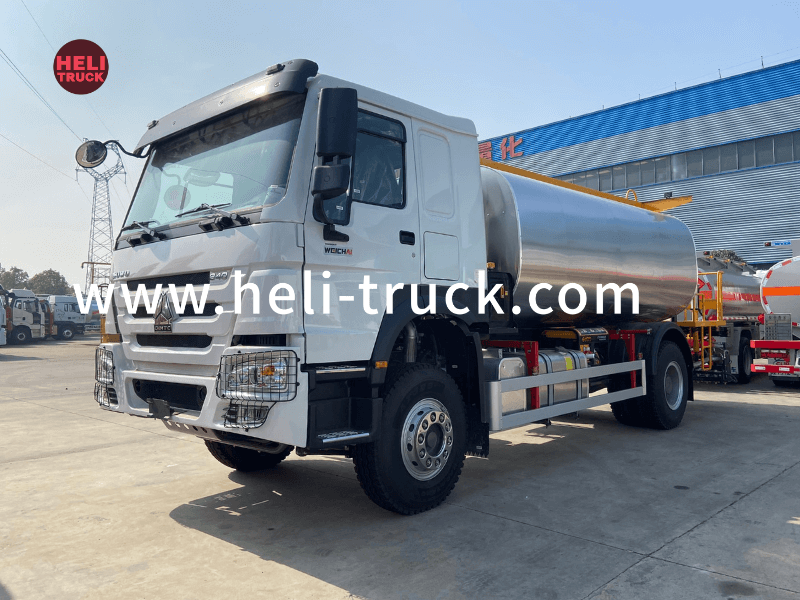Introduction
Garbage truck transfer stations play a crucial role in the efficient management of solid waste in urban areas. These facilities serve as intermediate points where waste collected from local collection routes is consolidated and transferred to larger vehicles for transport to landfills, recycling facilities, or other processing sites. In this comprehensive guide, we will explore the functions, design, operations, and environmental impact of garbage truck transfer stations.
Functions of Garbage Truck Transfer Stations
Garbage truck transfer stations serve several essential functions in the waste management process. Firstly, they provide a centralized location where waste from multiple collection routes can be brought together, facilitating efficient consolidation and transfer to long-haul vehicles. This consolidation helps to optimize transportation logistics and reduce the number of trips required to transport waste to final disposal sites.
Secondly, transfer stations serve as hubs for sorting and processing waste before it is transported to its final destination. At these facilities, waste may undergo manual or mechanical sorting to separate recyclable materials, organic waste, and residual waste. This pre-processing step helps to maximize recycling rates, reduce landfilling, and minimize the environmental impact of waste disposal.
Design Considerations for Garbage Truck Transfer Stations
The design of garbage truck transfer stations is critical to their functionality, efficiency, and environmental performance. Key design considerations include site selection, layout, infrastructure, and technology integration. When siting a transfer station, factors such as proximity to waste generation sources, transportation networks, and environmental considerations must be taken into account.
The layout of a transfer station should be optimized to facilitate the smooth flow of waste and vehicles through the facility. This may involve separate areas for tipping, sorting, storage, and loading operations, as well as adequate space for maneuvering large vehicles. Infrastructure elements such as tipping floors, compactors, conveyor belts, and storage bins are essential components of a well-designed transfer station.
In terms of technology integration, modern transfer stations often incorporate advanced systems for waste handling, sorting, and tracking. Automated sorting equipment, waste compaction machinery, odor control systems, and monitoring sensors are examples of technologies that can enhance the efficiency and environmental performance of transfer stations.
Operations and Management of Garbage Truck Transfer Stations
Effective operations and management practices are crucial for the successful functioning of garbage truck transfer stations. https://www.heli-truck.com/dongfeng-4x4-8000-liters-water-tank-truck/ must adhere to strict regulations and best practices to ensure compliance with environmental standards, worker safety requirements, and public health guidelines. Operational considerations include waste acceptance procedures, traffic management, equipment maintenance, and safety protocols.

Waste acceptance procedures at transfer stations typically involve screening waste loads for prohibited materials, hazardous substances, and oversized items. Proper documentation and tracking of incoming waste streams are essential for regulatory compliance and waste characterization. Traffic management measures, such as designated entry and exit points, traffic flow patterns, and queuing systems, help to minimize congestion and ensure efficient operations.
Equipment maintenance is another critical aspect of transfer station management. Regular inspection, maintenance, and repair of machinery such as compactors, conveyors, and sorting equipment are essential to prevent breakdowns, optimize performance, and prolong the service life of equipment. Safety protocols, including training programs, personal protective equipment requirements, and emergency response procedures, are vital to protect workers and visitors at the facility.
Environmental Impact of Garbage Truck Transfer Stations
Garbage truck transfer stations can have both positive and negative environmental impacts, depending on factors such as design, operations, waste composition, and location. On the positive side, transfer stations play a vital role in diverting recyclable materials from landfills, promoting resource recovery, and reducing greenhouse gas emissions associated with waste disposal.
By facilitating the sorting and separation of recyclable materials at source, transfer stations help to increase recycling rates and conserve valuable resources. Materials such as paper, cardboard, plastics, glass, and metals can be recovered and processed for reuse, reducing the demand for virgin raw materials and lowering energy consumption and carbon emissions associated with manufacturing processes.
On the negative side, transfer stations can contribute to air and water pollution, odor nuisance, and traffic congestion if not properly designed, operated, and maintained. Emissions from waste handling equipment, vehicle traffic, and landfill operations can degrade air quality and pose health risks to workers and nearby residents. Odor control measures, dust suppression systems, and pollution control technologies are essential for mitigating these environmental impacts.
Conclusion
Garbage truck transfer stations play a vital role in the efficient management of solid waste in urban areas. These facilities serve as intermediate points where waste collected from local collection routes is consolidated, sorted, and transferred to larger vehicles for transport to final disposal sites. By optimizing transportation logistics, promoting recycling, and reducing landfilling, transfer stations contribute to sustainable waste management practices and environmental protection.
To ensure the effective functioning of garbage truck transfer stations, careful attention must be paid to design, operations, management, and environmental considerations. Proper site selection, layout design, infrastructure planning, technology integration, and regulatory compliance are essential for the success of transfer station projects. By adopting best practices and innovative solutions, transfer stations can enhance waste management efficiency, resource recovery, and environmental sustainability in urban communities.
